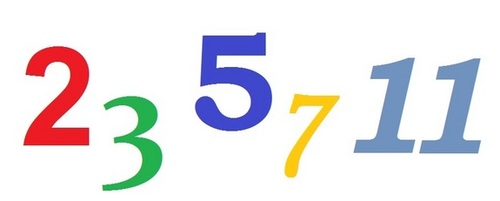Can you unlock this pattern? n°2.
 What is the next number in this sequence?
What is the next number in this sequence?
2 , 5 , 1 0 , 1 7 , 2 8 , 4 1 , 5 8 , 7 7 , 1 0 0
The answer is 129.
This section requires Javascript.
You are seeing this because something didn't load right. We suggest you, (a) try
refreshing the page, (b) enabling javascript if it is disabled on your browser and,
finally, (c)
loading the
non-javascript version of this page
. We're sorry about the hassle.
9 solutions
The image on the problem gave it away.
Log in to reply
When i did it, i didnt pay attention to the image. i only do it when the picture is somewhat funny. ;)
didn't pay attention to the image..........
We have to add successive prime numbers to every next term.
So, the answer is 1 2 9
THE DIFFERENCE B/W TWO CONSECUTIVE NUMBERS IS THAT OF A PRIME NO.
the difference between succesive numbers is a prime.. so the progression goes 2 (+3)= 5 (+5) =10 (+7) =17 (+11) =28 (+13) =41.......100 (+29) = 129
The difference between each number is a prime number:
Take 5 and 2, the difference is 3
Take 10 and 5, the difference is 5 and so on it goes...
So for each number in the sequence we have to add that number with the next prime number
therefore the answer is 129 (100+29)
The difference between any two of the terms is a prime number and it’s all the primes in order. 2 is the first prime, and the first number of the sequence. 3 is the second prime and 2+3=5. 5 is the third prime and 5+5=10 And so on. The next term after 100 would have to be the 10th prime number plus 100 (since there are 9 terms before it) or in other words 129.
at first, i thought the picture doesn't help. i already figured out what is the pattern before i realize that it is a clue :)
The difference between each number is a prime number:
Take 5 and 2, the difference is 3
Take 10 and 5, the difference is 5 and so on it goes...
So for each number in the sequence we have to add that number with the next prime number therefore the answer is 1 2 9